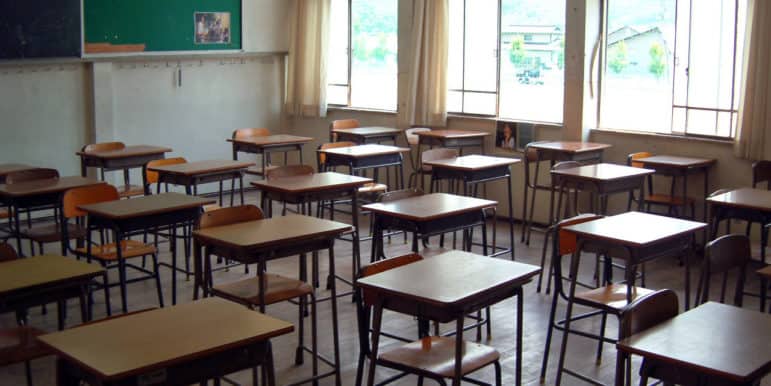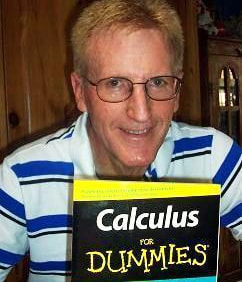
f_a_r_e_w_e_l_l / Creative Commons
“Our system of public education, though necessary and even essential to our survival as a nation, is in serious need of revamping,” the author writes. (photo cc info)
Editor’s note: Read Hansen’s previous column, which sets the stage for the reform ideas in this column, here.
COMMENTARY: I believe that public education is in a death spiral. As a veteran of four decades of teaching and administration, I can clearly track the trajectory of its effectiveness, and the curve trends precipitously downward, hastened by constant meddling by federal and state governmental agencies.
We should be ever mindful to “never use a political solution for an educational problem,“ as writer and friend Michael Swickard says. It is good advice.

Courtesy photo
Del Hansen
Finding a solution to the problems facing public education is nearly impossible. Like a runaway freight train, public education has created its own, almost unstoppable momentum. It seems that no one can stop the train, let alone turn it around. Additionally, ill-conceived solutions proposed by bureaucratic agencies often completely miss the point and actually impede the progress they intend to enhance. We are in, as my father used to say, a “mell of a hess.”
New ideas and the “quick fix du jour” invariably spring from “experts” who have never spent a single day teaching in a classroom. And therein lies the rub. As revered educator Earl Reum once said, “People tend to support that which they, themselves, create.” When teachers are left out of the decision-making and planning process and are considered only as employees delivering a product to consumers, the intent of the reform, no matter how noble, will be diminished and quite probably subverted.
A good reform agent will always involve teachers.
Our great nation is an amalgam of many different people, swirling disparate races, languages, beliefs, and cultures into a democratic republic governed by constitutional guidelines and guarantees. It shouldn’t work and sometimes doesn’t, but this experiment in governance is the best system yet devised.
Into this tenuous thread must be woven some underlying commonalities. I believe one such commonality has been, is, and should continue to be some form of public schooling. I do not support the Balkanization of the nation and individual communities into smaller enclaves of persons of homogenous race, religion, and culture that privatization would assuredly bring.
When one thinks about it, the only place where one can see the face of the community, completely unmasked, is at a public high school. One’s neighborhood, church, private school, or workplace often does not reflect the diversity of the community. In a pubic high school, one sees the good, the bad, the beautiful, the ugly, and the different.
Our country is rapidly becoming more diverse, not less. I believe there is great strength in rubbing shoulders, working, and dealing with persons different than oneself. More than ever we must learn to live together, and it is an underlying reason why this plan is based on some sort of system of public schools, rather than wholesale privatization.
However, just because I steadfastly believe in a system of public schooling, that does not mean that I defend the status quo. As adamantly as I have disagreed with the policies of the Obama administration in (1) not curtailing No Child Left Behind when it had the opportunity to do so, and (2) advancing the disastrous “Race To The Top” initiative with the Martinez administration for foisting upon public education a failed system of standardized testing, I do believe they both may have done the schools a service, in a backhanded way. Inept bungling just might prompt change when a tortoise-slow bureaucracy cannot.
Over the past 20 years, and probably even longer, schools have run in a crisis mode, being reactive rather than proactive in addressing the needs of a changing society. Aside from lobbying for more funding each year ad infinitum, local districts usually devote too little thought to retooling and rethinking their schools. Corporately produced assessment tools should never determine curriculum, as currently is the case.
Worse, perhaps, are non-teaching administrators who often toy with expensive add-on programs purchased from venders at conferences attended by the same Grand Poobahs of the central office. These programs succeed mainly in forcing teachers to attend even more meetings. In a superintendent’s defense, however, one must be reactive when new and untested mandates are forced upon the district from state and federal sources without proper input.
So what can be done? Probably nothing, given the current gridlock in Washington and Santa Fe. But, as Alexander Pope said, “Hope springs eternal.” Here are my suggestions, for what they are worth:
- Deregulate public schools to the extent that they will be as unfettered to innovate as their private counterparts. This would mean abolishing the national Department of Education and scaling back the influence of the state Public Education Department over local authority. Transfer accountability oversight for the reduced federal regulations to other agencies.
- Return to an elected state board of education that, in turn, would appoint the state superintendent. This reverses the current system of the state public education leader being appointed by the governor, a system implemented under the Richardson administration and continued to date. It becomes politicized to the exclusion of common sense.
- Shift authority for curriculum and evaluative detail from the state public education secretary or superintendent, as the case may be, to the local level, except for over-arching, general requirements and guidelines. Allow local districts to fully evaluate their own staff, with teacher and public input.
- Abolish the current system of arbitrary district lines to allow parental choice within the public school district in which they reside. One size does not and cannot fit all.
- Allow different schools to specialize in differing areas. Permit local building staff to have the professional latitude to adopt curricular ideas and later share those results with other schools. Allow for a continual use of best practices, depending on the needs of the community served.
- Reverse the idea that schools and curricula must be standardized so that every school is a carbon-copy of another. Allow schools to specialize and be different. Create a climate of competition between schools for students and allow parents and students to have a choice in the school they desire to attend.
- Maintain the state school funding model currently utilized to ensure funding equity among districts and prevent rich and poor districts. The New Mexico equalization model has been one of the bright spots for public education in this state over the years, and it should be maintained.
- Scrap the expensive and ineffective commercially generated standardized testing program implemented by current federal and state administrations in compliance with the failed “Race to the Top” initiative. Allow local districts to employ their own evaluative measures that can more accurately reflect student progress rather than standardized tests created from international corporate sources. Base accountability on parental and community feedback to student progress and needs customized to a locale. By the way, mining students for data and applying that questionable data to school and teacher rankings is not reform. It isn’t even sane.
- Build into the system at the state and local level a requirement that decision-makers solicit, receive, and consider teacher input in reaching curricular and pedagogical decisions. Reverse the current heavy-handed, top-down, militaristic trend of decision-making.
- Design teacher education programs at the university level to require students to first major in a specialty area, graduate in that specialty, and then enroll in a special condensed, compact fifth-year program overseen by colleges of education to include classroom observations and student-teaching experience. Use college of education resources to provide fledgling first-year teachers mentorship and advice throughout their inaugural year of teaching. De-emphasize and phase-out the general education hours currently required.
- Greatly expand vocational education to include on-site apprenticeships and site-based training of students, both leading to graduation. Allow locales and communities to customize programs to meet local employment needs and opportunities.
- Amend rigid graduation requirements to allow for more flexibility. Abandon the rubric of basing graduation on attainment of credits dependent on seat time and Common Core-related, corporately produced standardized tests. Consider issuing differentiated diplomas, making a distinction between college-ready, vocationally trained, and a general diploma. Currently, all students receive a general diploma.
- Encourage districts to continue to support the arts, humanities, and STEM education, but allow them to make the decisions locally. Require a community-service aspect in attainment of a diploma.
- Devise curricular-delivery programs that allow teachers to teach. I do believe this will be a natural outcome of deregulating the state, district, and local school units. Currently, the focus is on adherence to rigid standardized testing rubrics that distract teachers and students from actual learning experiences.
- Make every decision rendered predicated on: “Is this decision good for our kids?” Every decision. I’m not sure this is the over-arching criteria at this time, particularly at the national and state levels.
There are those who advocate the nuclear option: Blow up the system of public schools and privatize using government vouchers or even tax credits. I do not support this option. I firmly believe that this will lead to a Balkanization of America. It may happen, but not with my support.
And then there are those who, while pandering for increased funding and additional federally-connected programs, cannot offer any substantive reform ideas. It is analogous to tacking shiny chrome on a rusting Studebaker. I do not support this approach, either.
Our system of public education, though necessary and even essential to our survival as a nation, is in serious need of revamping. Indeed, the barn is burning. For those of us who have dedicated our entire adult lives to the teaching profession, it is a painful sight to see. Worse, some align according to general right-left political stances, making any form of compromise virtually impossible.
Something needs to be done, and a new public education system might run the gamut from the Phoenix rising from the ashes to Dr. Frankenstein’s monster. However, the barn is burning down. It is time to temporarily cherish the memories and rebuild.
Del Hansen is a four-decade veteran of the teaching profession, having taught math and physics at the secondary level, post-secondary math methods, and working as a high school administrator. Though currently retired, he continues to work with the private Golden Apple Foundation as an evaluator for their teacher of the year award and teaches music history to senior citizens.